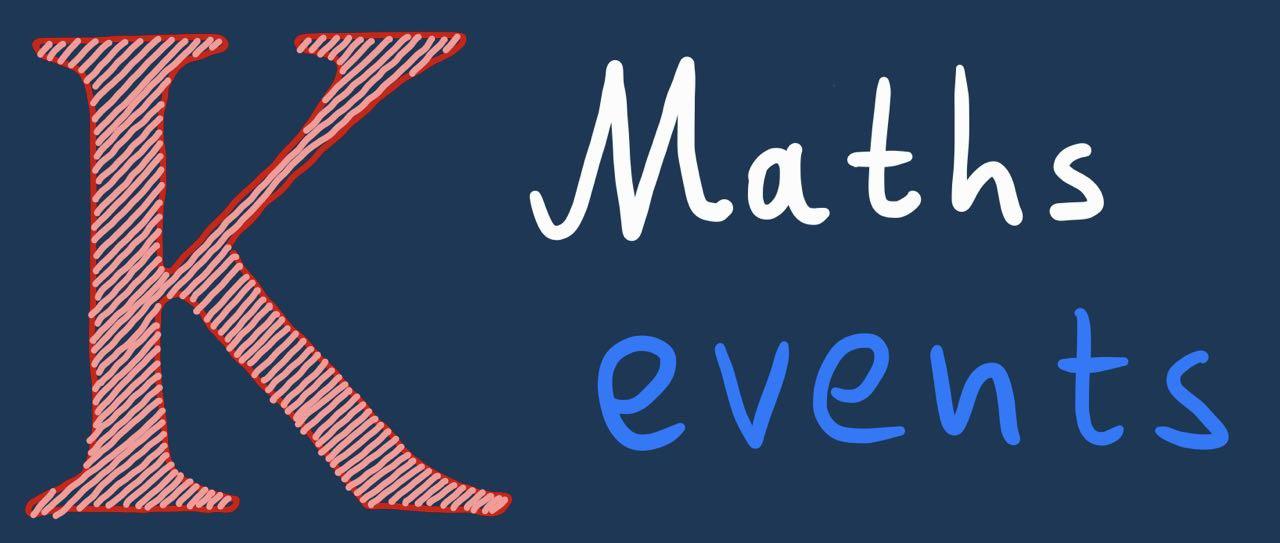Found 4 result(s)01.01.1970 (Thursday)
AN Spectral decomposition on the space of flat surfaces: Laplacians and Siegel--Veech Transforms.
regular seminar Jean Lagacé (KCL)
| at: 11:00 - 12:00 KCL, Strand room: abstract: | A classical result in spectral theory is that the space of square integrable functions on the modular surface $X = SL(2,\mathbb Z) \backslash SL(2,\mathbb R)$ can be decomposed as the space of Eisenstein series and its orthogonal complements, the cusp forms. The former space corresponds to the spectral projection on the continuous spectrum of the Laplacian on X, and the cusp forms to the projection on the point spectrum. This result is relevant in the geometry of numbers and in dynamics because the modular surface can parameterise the space of all unimodular lattices (and, thus, also the space of all unit area flat tori).
|
01.01.1970 (Thursday)
AN Spectral decomposition on the space of flat surfaces: Laplacians and Siegel—Veech Transforms
regular seminar Jean Lagacé (KCL)
| at: 11:00 - 12:00 KCL, Strand room: S5.20 abstract: | A classical result in spectral theory is that the space of square integrable functions on the modular surface $X = SL(2,\mathbb Z) \backslash SL(2,\mathbb R)$ can be decomposed as the space of Eisenstein series and its orthogonal complements, the cusp forms. The former space corresponds to the spectral projection on the continuous spectrum of the Laplacian on X, and the cusp forms to the projection on the point spectrum. This result is relevant in the geometry of numbers and in dynamics because the modular surface can parameterise the space of all unimodular lattices (and, thus, also the space of all unit area flat tori).
|
01.01.1970 (Thursday)
ME Maths education seminar: A variant on two-stage examination
regular seminar Jean Lagacé (King's College London)
| at: 13:30 - 14:30 KCL, Strand room: K0.50 abstract: | The two-stage examination method is a variant on exam taking whereby students are asked to take the same exam twice --- once in the 'usual' way, and the second time in small groups of three to four. It has been used in mathematics, physics and engineering since its inception 20 years ago at UBC in Vancouver, but is normally used in basic modules in the first or second year.
|
01.01.1970 (Thursday)
GE Free boundary minimal surfaces in the unit ball and the first Steklov eigenvalue
regular seminar Jean Lagace (KCL)
| at: 15:00 - 16:00 KCL, Strand room: S2-29 abstract: | Fraser and Schoen have uncovered a beautiful relationship between free boundary minimal surfaces in the unit ball and the Steklov problem: the coordinate functions of such surfaces are Steklov eigenfunctions with eigenvalue 1, and, on the other hand, the eigenfunctions for extremal metrics for the Steklov problem provide embeddings of free boundary minimal surfaces. The Fraser–Li conjecture states that not only are the coordinate functions Steklov eigenfunctions with eigenvalue 1, this eigenvalue is also the smallest non-zero one.
|
